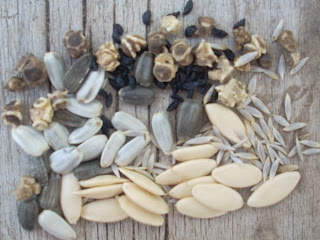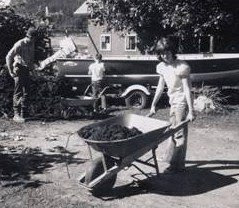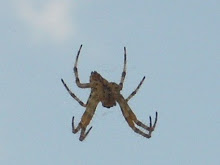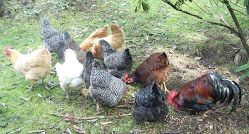
Are you thinking about doing some gardening this year? Maybe you're considering starting with seeds in the spring? With a little careful effort, seeds are the greatest way to start a garden. This is what I know about growing seeds:
Research is everything when it comes to seeds (meaning study the back of the seed packet). You will learn about what kind of light and space the plant requires, when to plant and if you need to start it indoors or directly sow it outside. Timing is very important when planting seeds.
Some plants, such as tomatoes, peppers, eggplant, broccoli and many flowers need to be planted inside. A few simple steps will insure a healthy and sturdy plant. Although you can use whatever container and dirt you have around, investing in seed starting mix and new clean pots will increase your success significantly. Seed starting mix, rather than potting soil is important because it doesn’t have fertilizer and other elements that may inhibit germination (seeds sprouting). There are many little microbes and fungus in regular dirt that don’t bother plants but can prevent seeds from germinating and will still be in previously used pots. So if your pots have had plants in them previously, wash them thoroughly with soap and a little bleach. I like to buy new seed starting trays every year, which makes my effort more rewarding and I always find other uses for the trays throughout the growing season.
So now you have clean pots filled with seed starting mix. Moisten the mix thoroughly (wet as a full sponge but not dripping) and then bury seeds the depth suggested on the seed package, generally 3 times the size of the seed. Cover with a plastic cover or plastic wrap to prevent drying and then find a warm spot to promote germination. My mom puts her trays on top of the refrigerator and I have them on the warm floor in the laundry room. Check regularly to see if they have begun to grow. This can happen in one day or a week depending on the type of plant.
As soon as you see a hint of green, get your plants into the light. The best is under a grow light and in a sunny window. At this point the hardest thing is preventing your plants from getting leggy (tall spindly stems) which is a symptom of not enough light. I use a plain old shop light that I “borrow” from the garage (my husband tries to be understanding when it is darker in the garage than normal in the spring). You can buy full spectrum bulbs for your shop light which would be perfect, but they are expensive, so I just use whatever florescent bulb is already in them. The trick is to keep the light 2 or 3 inches above the plants at all times, so make the light situation adjustable either by moving the light or plant trays up and down. A bonus is keeping your growing setup in the window to enjoy natural light as well. If you use just the window, plants will tend to lean toward it and get leggy. Finally, keep everything watered (a little water soluble fertilizer after you see the second set of leaves wouldn’t hurt) and enjoy watching your babies grow.
shop light which would be perfect, but they are expensive, so I just use whatever florescent bulb is already in them. The trick is to keep the light 2 or 3 inches above the plants at all times, so make the light situation adjustable either by moving the light or plant trays up and down. A bonus is keeping your growing setup in the window to enjoy natural light as well. If you use just the window, plants will tend to lean toward it and get leggy. Finally, keep everything watered (a little water soluble fertilizer after you see the second set of leaves wouldn’t hurt) and enjoy watching your babies grow.
Eventually, when it is warmer outside, I give back the shop lights and put my plants out. Plant in the garden per the directions on the seed package, but before that your plants will enjoy sitting in the sun. Getting them used to the elements must be done gradually and is called hardening off. The first day, leave them out 15 minutes to ½ hour. Each day after that double the time until by the end of the week they can be out all day. Be sure to bring the plants in at night if it’s going to be cold.
During or at the end of the process described above you will need to transplant your plants into a bigger pot or the garden. Here are a few things I do to make it an easier transition reducing shock that might set back or kill plants. Most plants can handle transplanting if done carefully. Extra care should be taken with cucumbers and squash type plants as they are very sensitive to having their roots disturbed. Dig a big enough hole that the plant will easily fit into, stir in some fertilizer granules (I use rabbit pellets) and fill with water that has some water soluble fertilizer mixed in. Carefully remove the plant from the pot by squeezing the sides, banging it gently against your hand and/or pulling gently on the base of the plant. If it is root bound (roots so dense they stay in the pot shape and are growing out the water drain holes) loosen or pull the roots apart some or they will continue to grow in that shape which can stunt the plant. Place the plant in the hole, burying it no deeper than it was previously (except tomatoes can be buried much deeper-see tomato article below), fill the hole with dirt and then water well which packs the dirt around the roots.
Once your seeds/plants are in the garden or permanent pots, keep them watered, add a little water soluble fertilizer occasionally and enjoy yummy vegetables throughout the summer. Remember, this is the way I do it, but there are many ways and experimentation is always good.
Research is everything when it comes to seeds (meaning study the back of the seed packet). You will learn about what kind of light and space the plant requires, when to plant and if you need to start it indoors or directly sow it outside. Timing is very important when planting seeds.
Some plants, such as tomatoes, peppers, eggplant, broccoli and many flowers need to be planted inside. A few simple steps will insure a healthy and sturdy plant. Although you can use whatever container and dirt you have around, investing in seed starting mix and new clean pots will increase your success significantly. Seed starting mix, rather than potting soil is important because it doesn’t have fertilizer and other elements that may inhibit germination (seeds sprouting). There are many little microbes and fungus in regular dirt that don’t bother plants but can prevent seeds from germinating and will still be in previously used pots. So if your pots have had plants in them previously, wash them thoroughly with soap and a little bleach. I like to buy new seed starting trays every year, which makes my effort more rewarding and I always find other uses for the trays throughout the growing season.
So now you have clean pots filled with seed starting mix. Moisten the mix thoroughly (wet as a full sponge but not dripping) and then bury seeds the depth suggested on the seed package, generally 3 times the size of the seed. Cover with a plastic cover or plastic wrap to prevent drying and then find a warm spot to promote germination. My mom puts her trays on top of the refrigerator and I have them on the warm floor in the laundry room. Check regularly to see if they have begun to grow. This can happen in one day or a week depending on the type of plant.
As soon as you see a hint of green, get your plants into the light. The best is under a grow light and in a sunny window. At this point the hardest thing is preventing your plants from getting leggy (tall spindly stems) which is a symptom of not enough light. I use a plain old shop light that I “borrow” from the garage (my husband tries to be understanding when it is darker in the garage than normal in the spring). You can buy full spectrum bulbs for your
 shop light which would be perfect, but they are expensive, so I just use whatever florescent bulb is already in them. The trick is to keep the light 2 or 3 inches above the plants at all times, so make the light situation adjustable either by moving the light or plant trays up and down. A bonus is keeping your growing setup in the window to enjoy natural light as well. If you use just the window, plants will tend to lean toward it and get leggy. Finally, keep everything watered (a little water soluble fertilizer after you see the second set of leaves wouldn’t hurt) and enjoy watching your babies grow.
shop light which would be perfect, but they are expensive, so I just use whatever florescent bulb is already in them. The trick is to keep the light 2 or 3 inches above the plants at all times, so make the light situation adjustable either by moving the light or plant trays up and down. A bonus is keeping your growing setup in the window to enjoy natural light as well. If you use just the window, plants will tend to lean toward it and get leggy. Finally, keep everything watered (a little water soluble fertilizer after you see the second set of leaves wouldn’t hurt) and enjoy watching your babies grow.Eventually, when it is warmer outside, I give back the shop lights and put my plants out. Plant in the garden per the directions on the seed package, but before that your plants will enjoy sitting in the sun. Getting them used to the elements must be done gradually and is called hardening off. The first day, leave them out 15 minutes to ½ hour. Each day after that double the time until by the end of the week they can be out all day. Be sure to bring the plants in at night if it’s going to be cold.
During or at the end of the process described above you will need to transplant your plants into a bigger pot or the garden. Here are a few things I do to make it an easier transition reducing shock that might set back or kill plants. Most plants can handle transplanting if done carefully. Extra care should be taken with cucumbers and squash type plants as they are very sensitive to having their roots disturbed. Dig a big enough hole that the plant will easily fit into, stir in some fertilizer granules (I use rabbit pellets) and fill with water that has some water soluble fertilizer mixed in. Carefully remove the plant from the pot by squeezing the sides, banging it gently against your hand and/or pulling gently on the base of the plant. If it is root bound (roots so dense they stay in the pot shape and are growing out the water drain holes) loosen or pull the roots apart some or they will continue to grow in that shape which can stunt the plant. Place the plant in the hole, burying it no deeper than it was previously (except tomatoes can be buried much deeper-see tomato article below), fill the hole with dirt and then water well which packs the dirt around the roots.
Once your seeds/plants are in the garden or permanent pots, keep them watered, add a little water soluble fertilizer occasionally and enjoy yummy vegetables throughout the summer. Remember, this is the way I do it, but there are many ways and experimentation is always good.














wow- love the instructions!! I'll definitely refer to this if I decide to go this route-thank you so much!!
ReplyDelete